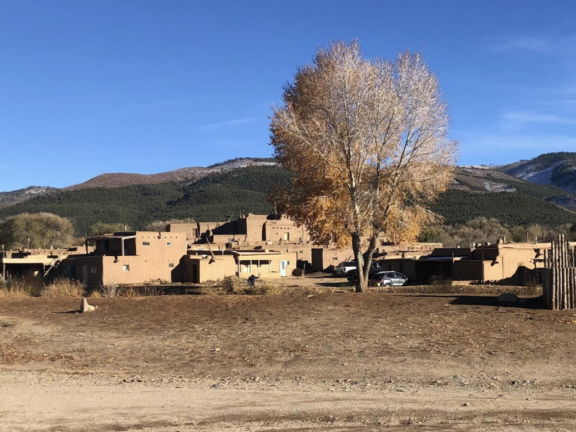Yaffe’s Quick Trip to UNESCO’s World Heritage Site, the Taos Pueblo

By Andrew Beers
Global Philadelphia Association sat down with Vice Chair Harold Yaffe to discuss his recent trip to the Taos Pueblo in New Mexico. Situated in the historic and artisan town of Taos, the Pueblo stands today as one of UNESCO’s World Heritage Sites in America.
While on vacation in Santa Fe, New Mexico, Yaffe was notified by GPA’s President, Zabeth Teelucksingh, about a nearby World Heritage Site that he could visit. During his travels to the site, Yaffe discovered a multitude of art collectives along the way. After visiting several local art distributors, he told his traveling party that he wanted to explore the World Heritage Site. While he described the journey from Sante Fe to Taos to be a “hike,” he felt the need to visit the Pueblo and experience first-hand its World Heritage status.
“I walked around the community and everything was well done. Very neat; very well kept. And within 20 minutes, I was able to cover as much area as I could without having to take the formal tour, but it was very enjoyable,” said Yaffe. He was impressed by the adobe structures that were maintained by tribal families and the community. To this day, an active community inside and outside the Pueblo’s walls maintains the historical site.
Ancient ruins from the Pueblo Indian settlement date back 1,000 years, but activity in the settlement grew between the late 11th and early 15th centuries. Currently, the Pueblo features ceremonial buildings and facilities, and adobe dwellings built in terraced tiers. This reflects the living culture of the group of Pueblo Indian people and their ancestors who resided in and around the site. More specifically, the property includes a walled village with two multi-story adobe structures, seven kivas (underground ceremonial chambers), the ruins of a previous pueblo, four middens, a track for traditional foot-races, the ruins of the first church built in the 1600s and the present-day San Geronimo Catholic Church, according to the UNESCO World Heritage Convention website.
“The Indian population in our country remains a problem, because the United States never really did what was promised to the Indian population,” said Yaffe. The site remains as a historic memorial for aboriginal ancestors who were affected by Spanish exploration and the War with Mexico by the U.S. Army in 1847. For instance, before San Geronimo was built, the War in Mexico caused the destruction of the original church. Fortunately, Taos Pueblo continues to stand the test of time and is considered to be one of the oldest inhabited communities in the U.S.
As a World Heritage Site, the Pueblo will continue to be maintained not only by the community, but by the state of New Mexico. Similarly in Philadelphia, Independence Hall was deemed a World Heritage Site, providing protection over the historical landmark for years to come. Although Taos is not a World Heritage City like Philadelphia, the Pueblo serves as a reminder of the expansive World Heritage in America. Learn more about the World Heritage Site in Taos, New Mexico here!
